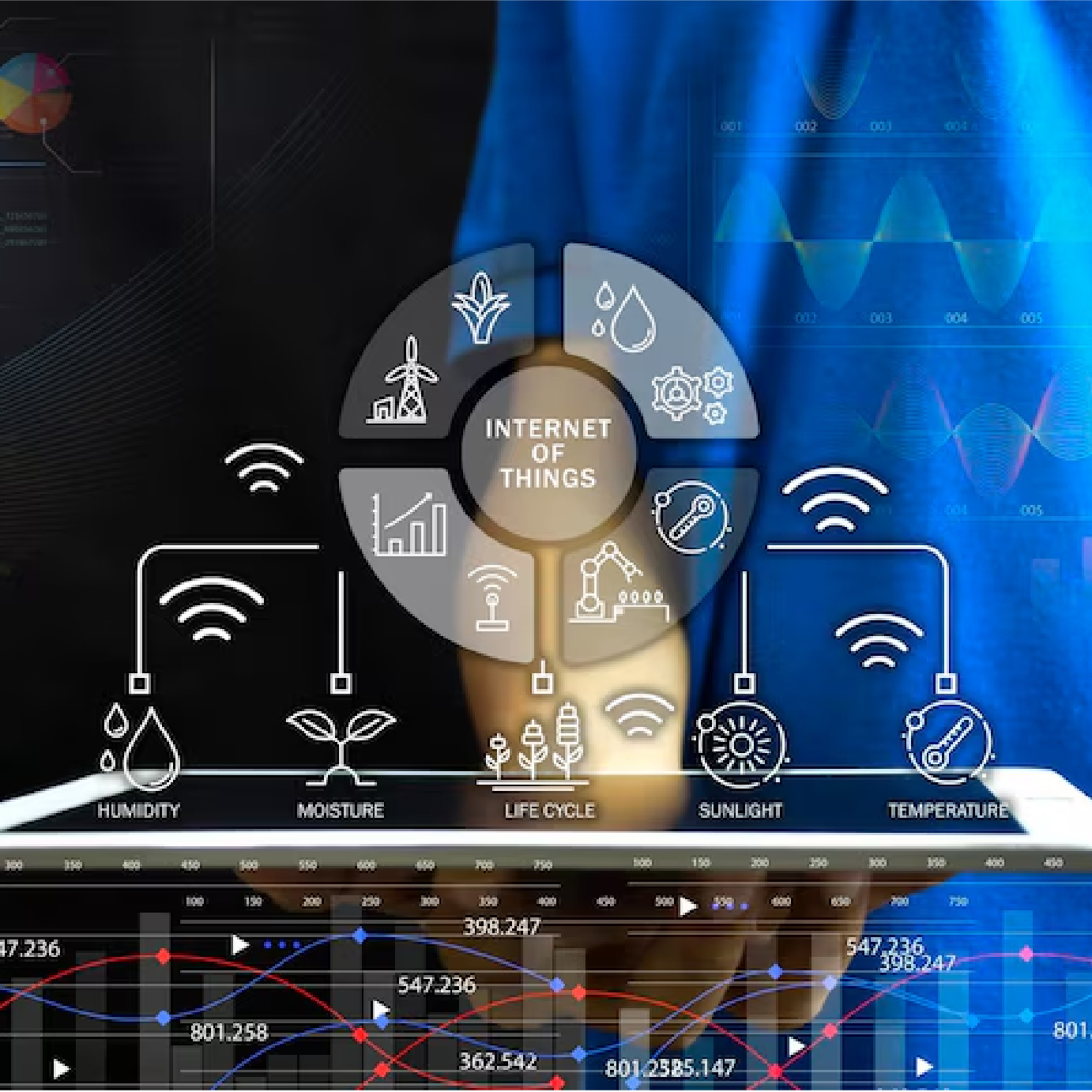The Future of Smart Connectivity
IoT | Embedded Systems
How connected technology is changing the game.
From smart homes to intelligent manufacturing, connected devices are reshaping how we live and work. At the heart of this transformation lies the convergence of IoT (Internet of Things) and embedded systems—technologies that bring intelligence and interactivity to everyday products.
Connected by Design
Smart connectivity starts with embedded systems—compact, purpose-built computing units integrated into devices to enable communication, sensing, and automation. When linked through IoT frameworks, these systems share data across networks in real time, unlocking unprecedented control and insight.
Example: Smart Home Devices
Think of smart thermostats or connected lighting systems. These devices monitor usage patterns, adapt to user behavior, and can be managed remotely—turning everyday environments into responsive ecosystems.

The Data Advantage
At the core of IoT is data. Embedded sensors and microcontrollers collect massive amounts of information that can be analyzed to improve efficiency, detect anomalies, and enable predictive maintenance.
Example: Industrial IoT (IIoT)
In manufacturing, IoT-enabled equipment can detect wear and tear before a failure occurs. This not only reduces downtime but also extends the life of critical systems, enhancing productivity and safety.
Real-Time Intelligence
Smart connectivity enables instant feedback loops. Devices can make decisions autonomously, respond to environmental changes, and even learn over time through AI and machine learning integration.
Example: Wearable Health Tech
Fitness trackers and health monitors measure vitals in real time, alerting users or healthcare providers if irregularities are detected. These systems rely on precise, low-power embedded platforms for continuous operation.
Challenges & Opportunities
As connectivity expands, so do the challenges—security, interoperability, and power efficiency are key considerations in smart device design. Engineers are now focusing on lightweight, secure communication protocols and modular system architectures.
Example: Secure Embedded Design
Using trusted hardware modules (TPMs) and encrypted communication channels, designers can ensure that connected devices are resilient to cyber threats—a critical step for applications in finance, healthcare, and smart cities.
The Road Ahead
The next wave of smart connectivity will go beyond isolated smart products—it will build intelligent ecosystems where devices collaborate, self-optimize, and evolve with user needs.
Example: Smart Cities
Imagine traffic lights that adjust based on congestion data, public transport that syncs with real-time passenger loads, and energy grids that optimize based on usage trends. It's all made possible by embedded systems and IoT.

Smart connectivity is not just about linking devices—it's about building intelligent systems that adapt, respond, and drive better outcomes.
Mechionix IoT Team
Conclusion
Smart connectivity is not just about linking devices—it's about building intelligent systems that adapt, respond, and drive better outcomes. With IoT and embedded technologies at the forefront, we're entering an era where everything communicates, learns, and collaborates.

